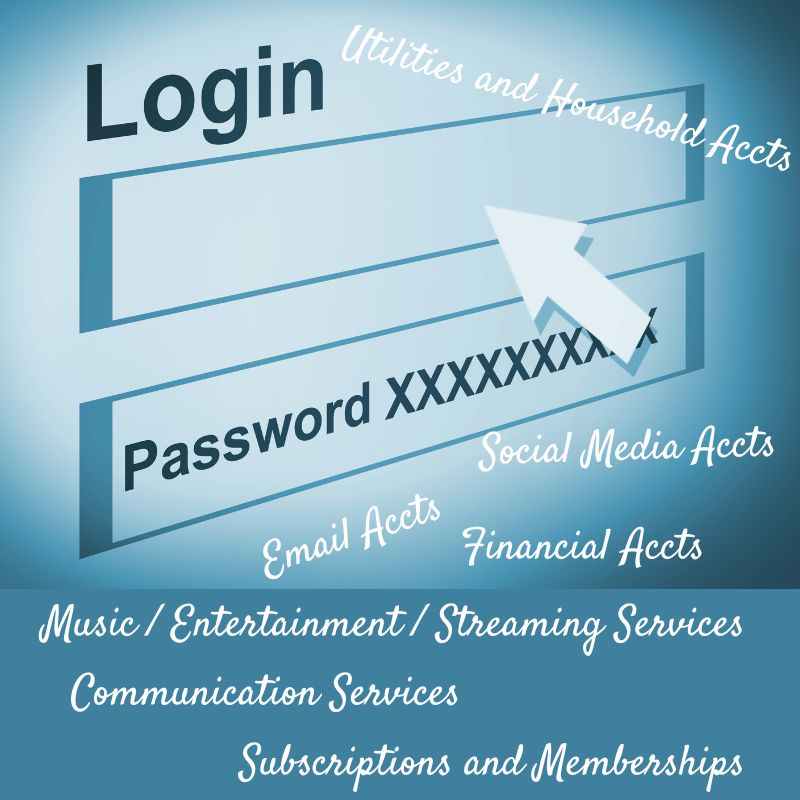Your Digital Life Continues Without You: Managing Digital Assets

In today’s digital age, our online presence and digital assets have become an integral part of our lives. However, many people overlook the importance of managing these assets as part of their end-of-life planning. Today we’ll discuss why it’s crucial to manage your digital life after death and provide tips for creating a digital estate plan.
Understanding Digital Assets
Digital assets include any online accounts, digital files, and online content you own. Examples of digital assets are:
- Social Media Accounts: Facebook, Instagram, Twitter, LinkedIn
- Email Accounts: Gmail, Yahoo, Outlook
- Financial Accounts: Online banking, investment accounts, PayPal, Venmo
- Subscriptions and Memberships: Netflix, Amazon Prime, professional memberships
- Digital Files: Photos, videos, documents stored on your computer, Google Drive, Drop Box
The Importance of Managing Digital Assets
Without a plan for your digital assets, your loved ones may face significant challenges in accessing and managing these accounts after your death. This can lead to:
- Loss of Important Information: Critical information and personal memories stored online may become inaccessible.
- Security Risks: Unmanaged accounts can be vulnerable to hacking and identity theft.
- Legal and Financial Complications: Failing to address digital assets can result in legal and financial complications for your estate.
Steps to Create a Digital Estate Plan
1. Inventory Your Digital Assets
- Make a comprehensive list of all your digital assets, including account usernames and passwords.
- Include any digital files stored on your computer, external drives, or cloud services.
Note: For assistance with this step click to download our Household Account Checklist>>
2. Designate a Digital Executor
- Choose a trusted person to manage your digital assets after your death. This person will be responsible for carrying out your digital estate plan.
- Ensure this person has the necessary information and access to your accounts.
3. Specify Your Wishes
- Clearly outline your wishes for each digital asset. For example, you may want certain accounts to be deleted, memorialized, or transferred to a loved one.
- Provide instructions for handling any sensitive or personal information.
4. Use Digital Estate Planning Tools
- Consider using digital estate planning tools or services that can help manage your online accounts and digital assets. (Such as My Life & Wishes and Password Management tools)
Pro Tip: Assign your Digital Executor as an Authorized User on your MLW account and provide them with access to the website logins and social media sections.
5. Include Digital Assets in Your Will
- While not all digital assets can be legally transferred through a will, it’s important to mention them and your digital executor in your will.
- Consult with an attorney to ensure your digital estate plan aligns with current laws and regulations.
Conclusion
Managing your digital assets is an important part of both everyday life and end-of-life planning. By putting a digital estate plan in place, you can make sure your online presence is handled the way you want—and give your loved ones the clarity and access they’ll need when it matters most.